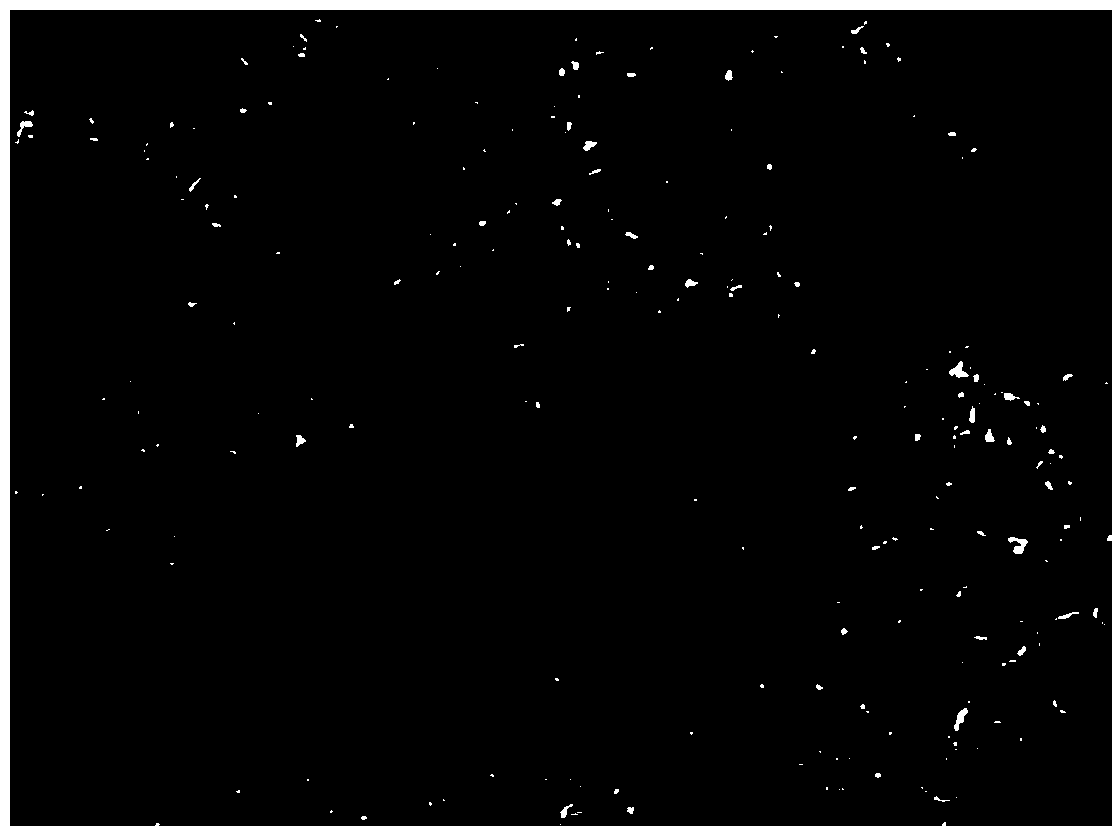Preparation method of siliceous mesocellular foams (MCFs) loaded nano Ni2P hydrogenation catalyst
A technology of mesoporous silica and hydrogenation catalyst, which is applied in the direction of physical/chemical process catalysts, catalyst carriers, chemical instruments and methods, etc. It can solve the problems of complex preparation methods, easy particle agglomeration, and blocked pores, and achieve simple preparation process , Accelerate the diffusion and avoid the effect of clogging
- Summary
- Abstract
- Description
- Claims
- Application Information
AI Technical Summary
Problems solved by technology
Method used
Image
Examples
Embodiment 1
[0024] Weigh 3mmol of nickel chloride and add it to 10mL of deionized water. After the nickel chloride is dissolved, add 3mmol of succinic acid and stir for 0.5h to obtain a stable and dispersed aqueous solution of complexed nickel ions; add 0.5g of MCFs to the above solution and stir at room temperature 1h, then heated to 70°C, evaporated to dryness, baked in an oven at 100°C overnight, then roasted in a muffle furnace at 500°C for 3h to obtain supported nickel oxide powder; then added 4.5mmol of dihydrogen hypophosphite to the powder Sodium, mixed mechanically and placed in a tube furnace, in N 2 300°C for 3 hours, then fully washed with deionized water, and dried at 100°C to obtain the catalyst A.
Embodiment 2
[0026] Weigh 3mmol nickel chloride and add it to 10mL deionized water, add 3mmol EDTA after the nickel chloride dissolves, stir for 0.5h to obtain a stable and dispersed complex nickel ion aqueous solution; add 0.5g MCFs to the above solution, stir at room temperature for 1h, Then heated to 70°C, evaporated to dryness, baked in an oven at 100°C overnight, and then roasted in a muffle furnace at 500°C for 3h to obtain supported nickel oxide powder; then added 4.5mmol sodium dihydrogen hypophosphite to the powder, Mixed mechanically and placed in a tube furnace under N 2 300°C for 3 hours, then fully washed with deionized water, and dried at 100°C to obtain the catalyst B.
Embodiment 3
[0028] Weigh 3mmol of nickel chloride and add it to 10mL of deionized water. After the nickel chloride is dissolved, add 3mmol of citric acid and stir for 0.5h to obtain a stable and dispersed aqueous solution of complexed nickel ions; add 0.5g of MCFs to the above solution and stir for 1h at room temperature , then heated to 70°C, evaporated to dryness, and then baked in an oven at 100°C overnight, and then roasted in a muffle furnace at 500°C for 3 hours to obtain a supported nickel oxide powder; then add 4.5mmol sodium dihydrogen hypophosphite to the powder , mixed mechanically and placed in a tube furnace, under N 2 at 300°C for 3 hours, then fully washed with deionized water, and dried at 100°C to obtain the catalyst C.
PUM
 Login to View More
Login to View More Abstract
Description
Claims
Application Information
 Login to View More
Login to View More - R&D
- Intellectual Property
- Life Sciences
- Materials
- Tech Scout
- Unparalleled Data Quality
- Higher Quality Content
- 60% Fewer Hallucinations
Browse by: Latest US Patents, China's latest patents, Technical Efficacy Thesaurus, Application Domain, Technology Topic, Popular Technical Reports.
© 2025 PatSnap. All rights reserved.Legal|Privacy policy|Modern Slavery Act Transparency Statement|Sitemap|About US| Contact US: help@patsnap.com

